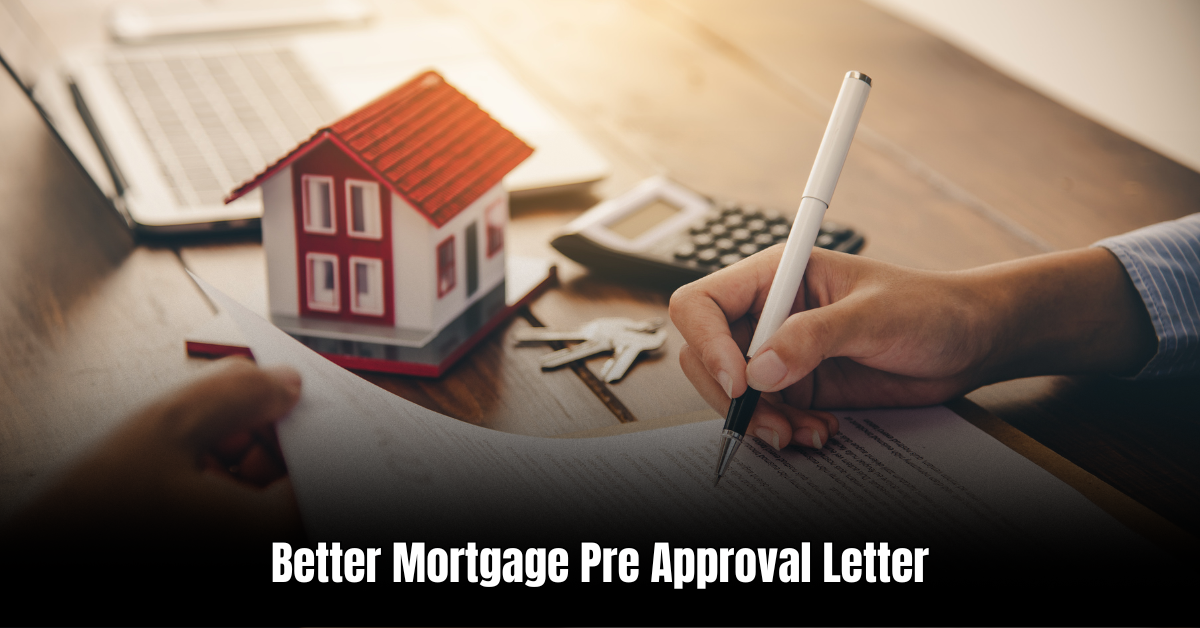When it comes to getting a mortgage, one of the most important steps is obtaining a pre-approval letter. This letter serves as a confirmation from a lender that you are qualified to borrow a certain amount of money based on your income, credit score, and overall financial status. However, not all pre-approval letters are created equal. In this article, we will explore how to obtain a better mortgage pre-approval letter that can increase your chances of securing the loan you need.
1. Choose the Right Lender
Not all lenders are equal, so it’s crucial to select the right one to assist you with your mortgage pre-approval. Look for lenders with a solid reputation, good customer reviews, and a track record of providing excellent service to their clients. Working with a reputable lender can significantly enhance your chances of securing a more favourable pre-approval letter.
2. Gather Your Documents
To obtain a pre-approval letter, you’ll need to provide the lender with various documents that verify your income, employment history, and assets. Take the time to gather all the necessary paperwork before applying for a pre-approval. This includes recent pay stubs, tax returns, bank statements, and any other supporting documents that the lender may require.
3. Improve Your Credit Score
Your credit score plays a significant role in the mortgage pre-approval process. A higher credit score could lead to a better pre-approval or favourable terms and interest rates. Take steps to improve your credit score by paying your bills on time, reducing your debt-to-income ratio, and disputing any errors on your credit report. This can significantly increase your chances of getting a better pre-approval letter.
4. Get Pre-Qualified First
Before applying for a pre-approval, consider getting pre-qualified first. Pre-qualification is an initial assessment of your financial situation and can give you an idea of how much you may be eligible to borrow. This step helps you determine the right loan amount, potentially avoiding disappointment if you don’t qualify for as much as anticipated. It also provides an opportunity to address any issues before applying for pre-approval.
5. Show Stability
Lenders prefer to work with borrowers who have a stable income and employment history. Demonstrating Stability in areas can significantly improve our chances of receiving a more favourable approval letter. Aim to have a steady job with a consistent income for at least two years before applying for a mortgage pre-approval.
6. Include a Strong Cover Letter
When applying for a mortgage pre-approval, consider including a cover letter that showcases your motivations and financial responsibility. This can help lenders better understand your situation and may increase your chances of getting a more favourable approval letter. Mention any positive factors that may not be apparent from your financial documents, such as your long-term plans, career advancement prospects, or large savings.
7. Work with an Experienced Mortgage Broker
If you’re finding the mortgage pre-approval process overwhelming, consider working with an experienced mortgage broker. A mortgage broker can help you navigate the complexities of the process, provide advice tailored to your specific situation, and assist you in obtaining a better pre-approval letter. They have access to a variety of lenders and can negotiate on your behalf to get the best possible terms.
Frequently Asked Questions For Better Mortgage Pre-Approval Letter: Unlock Your Dream Home
What Is A Mortgage Pre-approval Letter?
A mortgage pre-approval letter is a document issued by a lender that states the amount a borrower is pre-approved to borrow for a mortgage, based on their financial information.
How Does A Mortgage Pre-approval Letter Help Me?
A mortgage pre-approval letter helps you understand how much house you can afford and strengthens your position when making an offer on a property.
What Information Do I Need For A Pre-approval Letter?
For a mortgage pre-approval letter, you’ll need to provide details about your income, employment history, assets, debts, and credit score.
How Long Does It Take To Get A Pre-approval Letter?
The timeframe for getting a pre-approval letter can vary. Typically, it takes about a week, depending on the lender and the complexity of your financial situation.
Conclusion
Obtaining a better mortgage pre-approval letter requires careful preparation and strategy. By choosing the right lender, gathering the necessary documents, improving your credit score, getting pre-qualified, demonstrating stability, including a strong cover letter, and working with an experienced mortgage broker, you can significantly increase your chances of obtaining a pre-approval letter that meets your needs and helps you secure the mortgage loan you desire.
Ismail Hossain is the founder of Law Advised. He is an Divorce, Separation, marriage lawyer. Follow him.





Leave a Reply